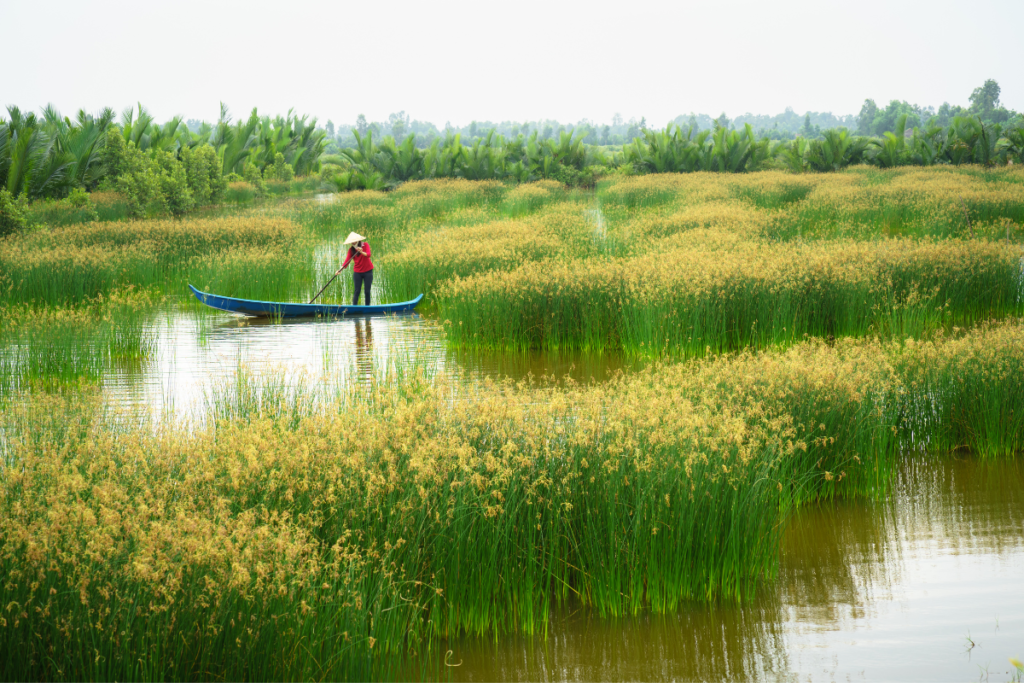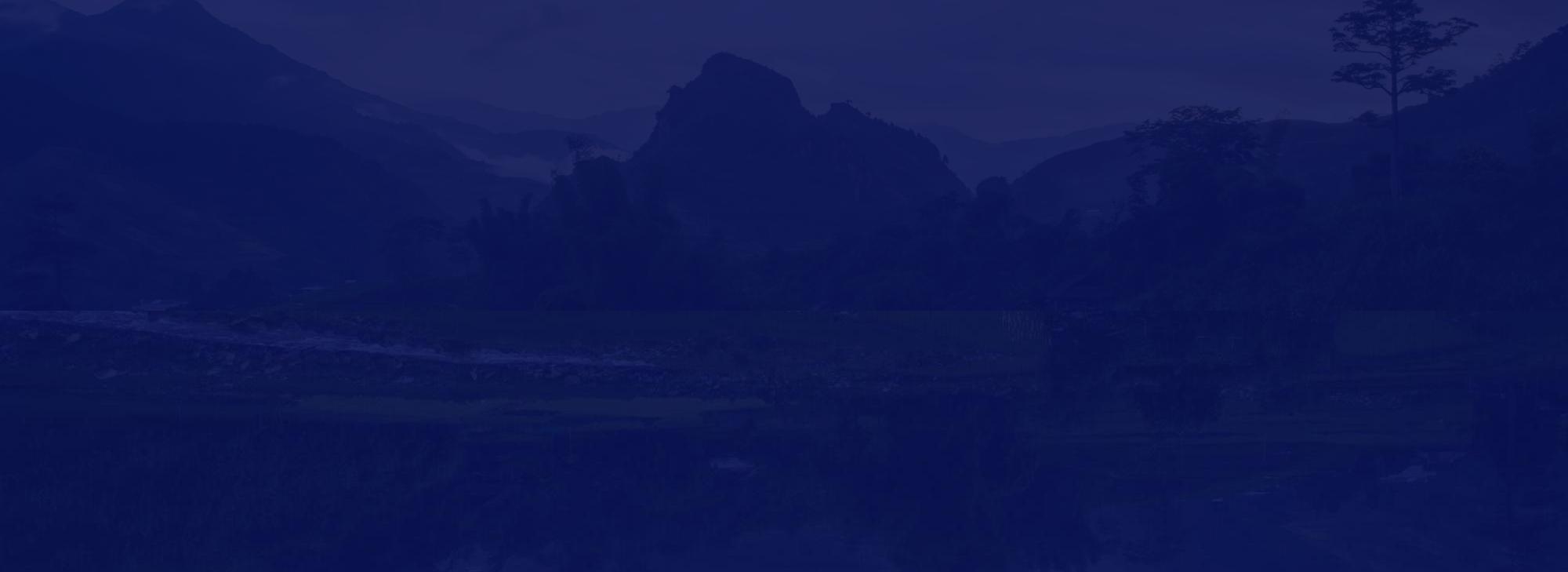Mekong Delta in Vietnam – Things to Do
Table of Contents
ToggleLonging for the warmth of the sun and the tranquil embrace of nature?
Yearning to stroll along winding canals, witness sunlight filtering through foliage, and explore historical wonders?
Within a short 2-3 hour drive from Saigon, the Mekong Delta awaits, offering these captivating experiences and more.
Best time to visit Mekong Delta – Floating season
Mekong Delta, affectionately named Western region by Vietnamese people, encompasses six provinces flourishing with the abundant alluvium of the Mekong River. With tropical climate and warm weather throughout the year, Mekong Delta is an agricultural heartland in Vietnam.

From September to December, Mekong Delta steps into “floating season”, when water rises bringing nutrient – rich alluvium, an abundance of river fishes and fresh fruits alike. At this time, you will see lush green landscapes offering a mesmerizing panorama of vivid colors. This time offers you a perfect opportunity to embrace local life on rustic boats and indulge in the delicacies of Southern Vietnam.
Things to do in Mekong Delta Vietnam
Embark on a Riverine Adventure aboard a Local Boat
The ideal way to immerse yourself in the riverine life of the Mekong Delta is sitting on a boat with locals and gently venturing through an intricate water system. Along this odyssey, you can experience daily activities on the water and along the riverbanks.
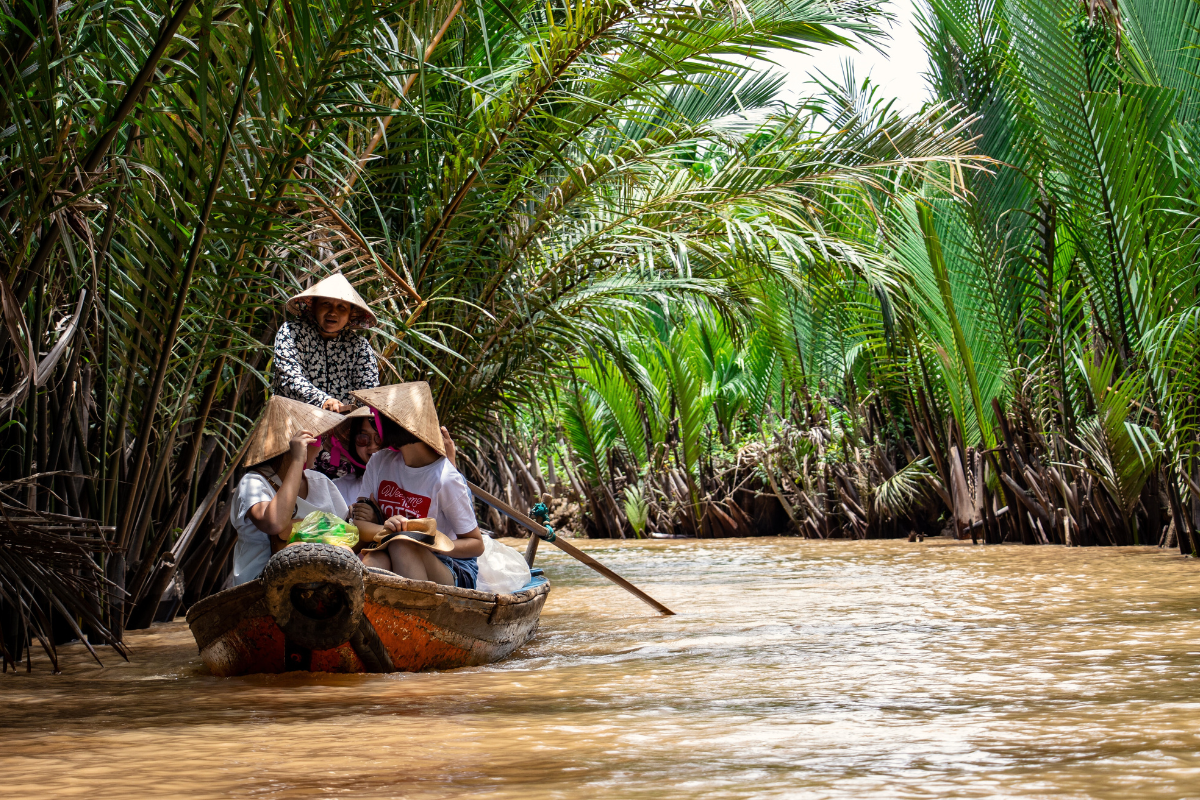
Mekong Delta is famous for colorful boats, bustling floating markets such as Cai Rang, Cai Be or vivid and arresting photos of tropical fruits and diverse specialties, etc. Yet, this land holds many hidden gems beyond these familiar sights. Embracing a slow-travel approach, we unveil the authentic and lesser-explored corners of this cherished region!
Boat trips & Floating markets
Floating markets are an essential part of the Mekong Delta experience, particularly during the high-water season, when they bustle with diverse produce and vibrant energy. Pause at any boat to immerse yourself in local life, engage with residents, and indulge in exquisite fruits or flavorful dishes embodying the essence of Southwest Vietnam.
Moreover, delve into the enduring trade customs of local communities, a sincere and captivating tradition. Each boat showcases a variety of goods, cleverly displayed on tall bamboo poles for easy identification from afar. Visitors, arriving by both land and water, navigate between boats, engaging in a delightful shopping experience.

Nowadays, the brightly colored floating markets have evolved beyond local trade hubs to become sought-after destinations for both travelers and photography enthusiasts. Some renowned markets have gained popularity among both domestic and international tourists, increasingly becoming tourist hotspots.
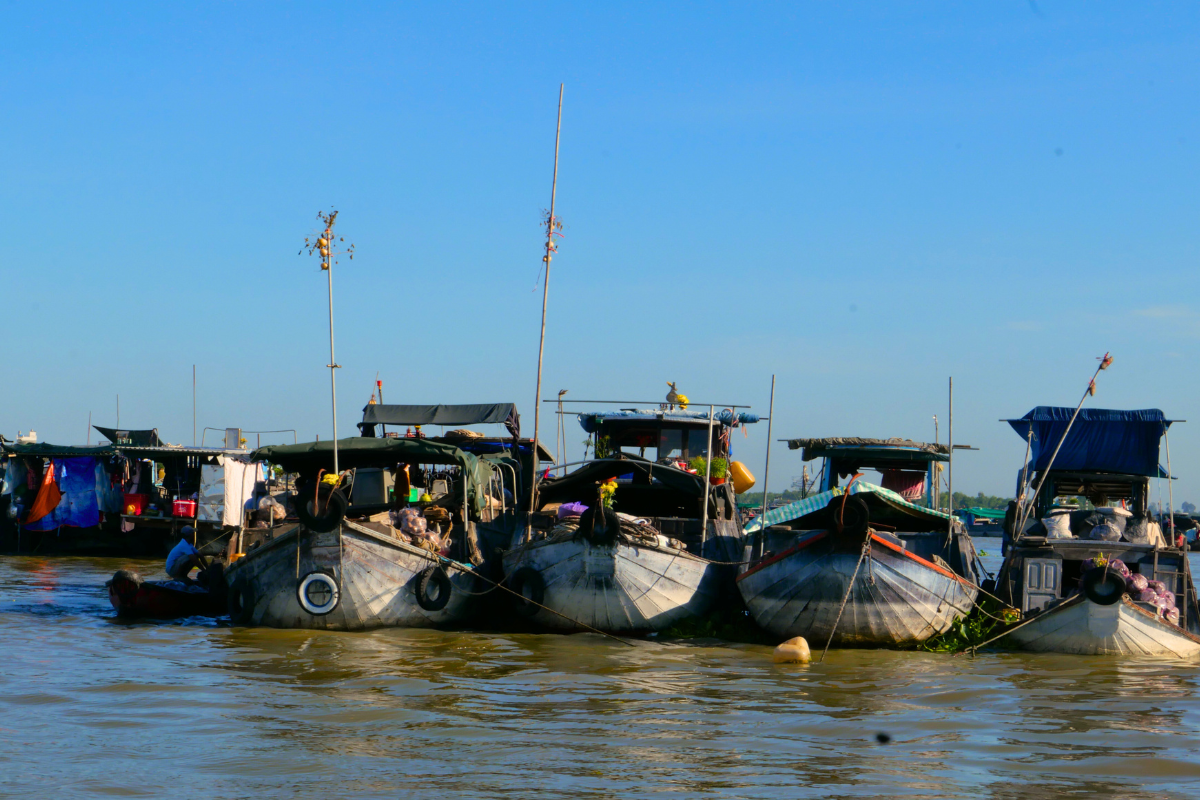
However, spanning across six provinces in the South, the Mekong Delta maintains authentically lively markets that still capture the essence of this land. As DCT Responsible Travel style, they are places we’ll take you to experience the genuine aspects of life in Western Vietnam. Not Cai Rang or Cai Be market, Long Xuyen floating market which still serves the lives of the locals, is a unique destination curated by us due to its authentic atmosphere.
Cultural and Historic Exploration in villages and heritages in Mekong Delta
Craft villages
The Mekong Delta treasures the rich cultural heritage of Southern Vietnam, safeguarded within its ancient villages showcasing diverse traditional craftsmanship. Drifting along the waterways, take a pause to explore picturesque riverside villages and delve into their storied heritage.
One of the most fascinating highlights in this journey is Mang Thit village, often known as “Red Kingdom” which is used to be the largest producer of red bricks and pottery in this region. With its centuries of history, this architectural marvel boasts clustered brick kilns resembling a captivating miniature kingdom when viewed from afar.
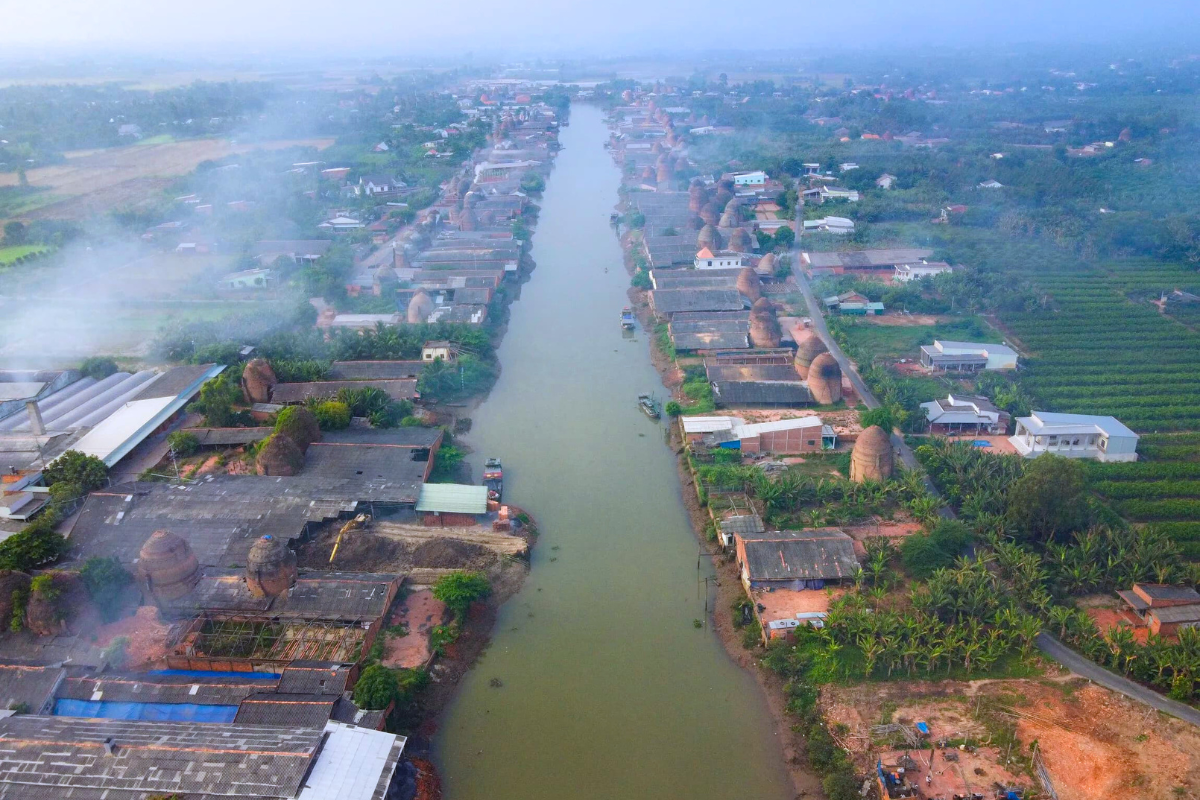
Beyond its architectural allure, it stands as a symbol of cultural amalgamation, reflecting distinctive craftsmanship woven through the Khmer, Kinh, and Chinese communities. Embark on a cycling adventure along the village pathways, where you’ll witness an awe-inspiring sight of countless ancient brick kilns adorning both sides of the canal.
As a bridge connecting travelers and local people, we will take you to families where time-honored crafts are lovingly preserved through generations. This offers a unique chance to intimately interact with the locals and witness firsthand the continuation of ancestral practices, from making bricks, laying floors, weaving bamboo trays, crafting bamboo baskets, and weaving fabrics, etc. Explore, learn, and immerse yourself in the living legacy of these traditional artisanal skills.
Sa Dec Ornamental Flower Village
Nestled along the Tien River’s banks, invites visitors to immerse themselves in a vibrant and captivating corner of the Mekong Delta. Renowned for its fertile soil and ample sunshine, this land boasts a perpetual spring, where flowers bloom year-round, filling the air with their delightful fragrance.

Sa Dec, the floral hub of the West for over a century, mesmerizes visitors with its diverse collection of more than 2,000 ornamental flower varieties. This botanical wonderland showcases an array of flowering plants, foliage, architectural greens, and fruit-bearing trees, creating a spectacular sight.
For enthusiasts of literature and cinema, a stroll through the village unveils the enchanting Huynh Thu Le ancient house. Steeped in history, this house played a role in the romantic tale of French writer Marguerite Duras. It was the residence of the family of the male protagonist in Duras’s renowned novel “L’Amant” (The Lover), intricately interwoven with Duras’s real-life love story.
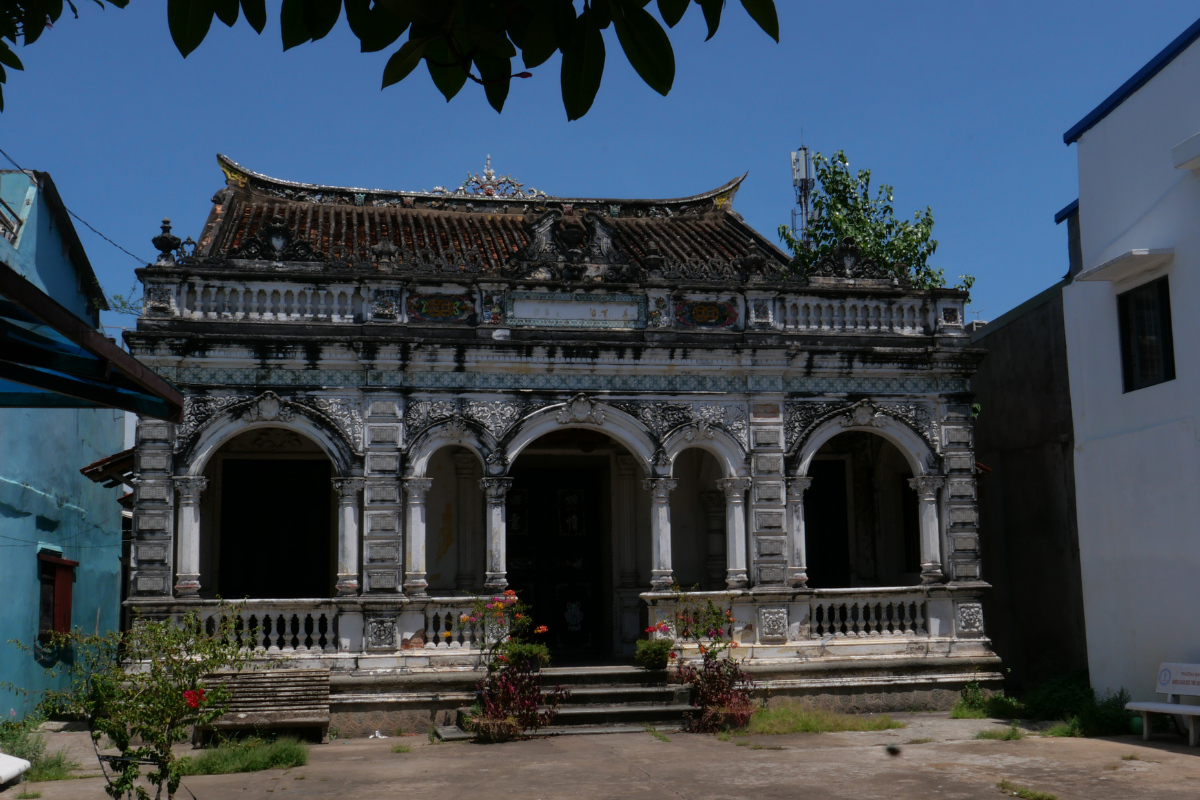
Tra Su Cajuput Forest – an eco-tourism destination
Decimated by American bombings before 1975, Tra Su was left barren. Post-war, An Giang province’s authorities embarked on a reforestation mission, replanting cajuput trees to safeguard the region from flooding during monsoon seasons. This forest gained recognition as a special restoration zone in 1983, aspiring to transform into a prestigious scientific forest and nature reserve.
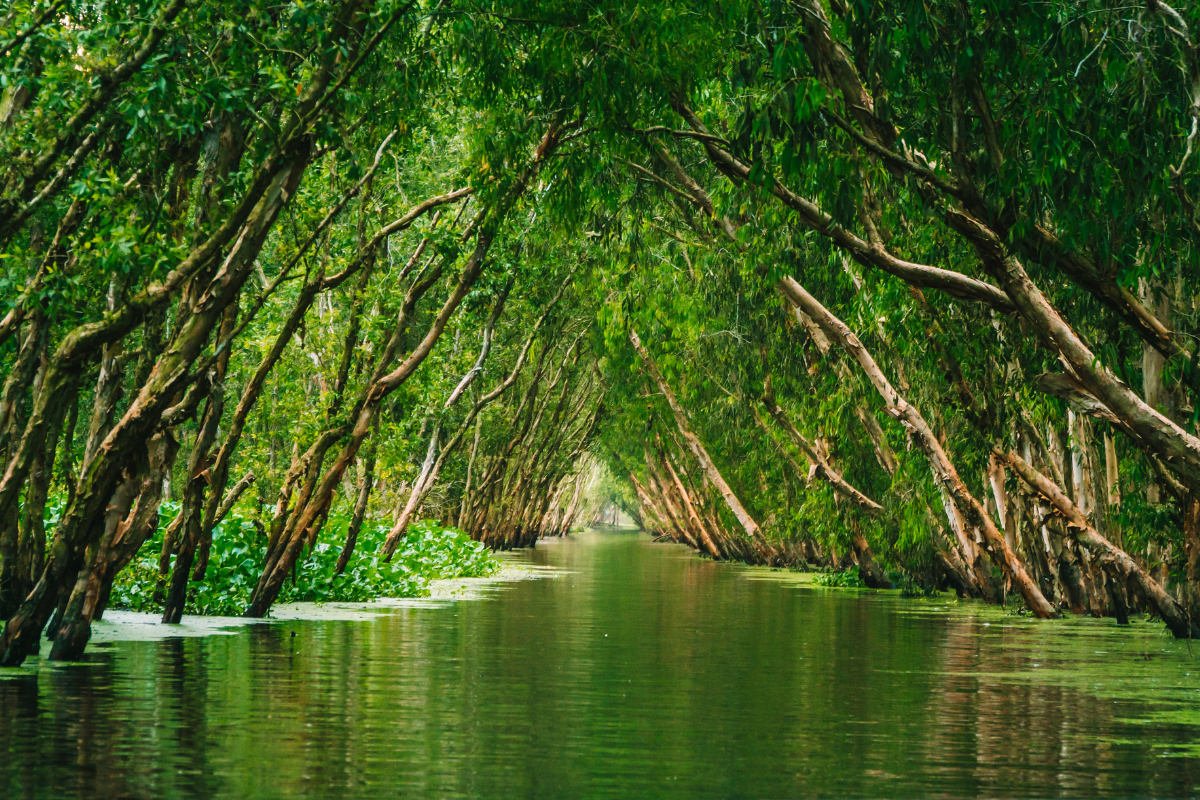
Today, sprawling across 850 hectares, this forest hosts a diverse and vibrant ecosystem, showcasing the typical flooded woodlands along the Western region of the Hau River. Comprising 140 types of flora, 70 bird species, 11 animal species, 25 reptile species, and 23 fish varieties, it is a true marvel of nature.
The floating season offers the best time to explore Tra Su Cajuput Forest. As waters rise, enveloping the area, visitors can hop on a traditional sampan (a rustic wooden boat) and row through the heart of the forest immersing themselves in its lush beauty and discovering captivating waterfalls.
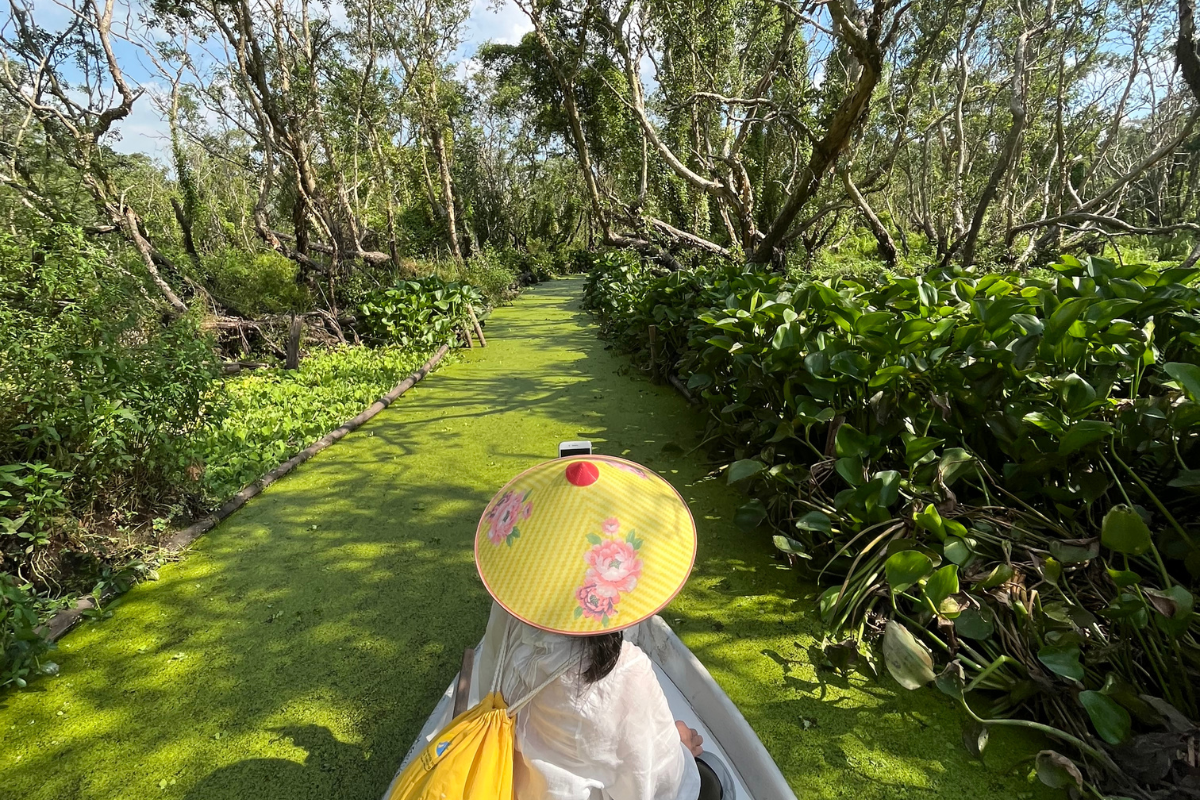
Entering Tra Su’s gateway, feast your eyes on a captivating panorama of lush greens. Venturing into its intricate network of small canals reveals a vast wetland blanketed in vibrant emerald-green duckweed, seemingly concealing the water’s surface. The landscape is adorned with lotus and white lily blooms, symbolizing Vietnamese culture. Majestic cajuput trees line the waterways, forming canopies with blooming white flowers. Below the water’s surface, shrimp and fish dart about, while overhead, families of birds gather.
Top Picks: Movies about the Mekong Delta for you
- L’amant (The Lover) (1992)
- Đất rừng phương Nam (Southern Forest Land) (1997) (TV series)
- Đất rừng phương Nam (Southern Forest Land) (2023)
Embracing the diverse natural landscape, Mekong Delta promises vibrant and lively experiences for travelers, especially in festive season. Follow DCT Responsible Travel, slow down and explore less-traveled paths in the Mekong river for unique and memorable holidays!
Discover our tours here:
Sign Up For
Exclusive Travel Insights and Unforgettable Experiences!
Discover hidden gems that ensure a one-of-a-kind journey. Sign up today to explore a world of extraordinary experiences and make memories that last a lifetime.

